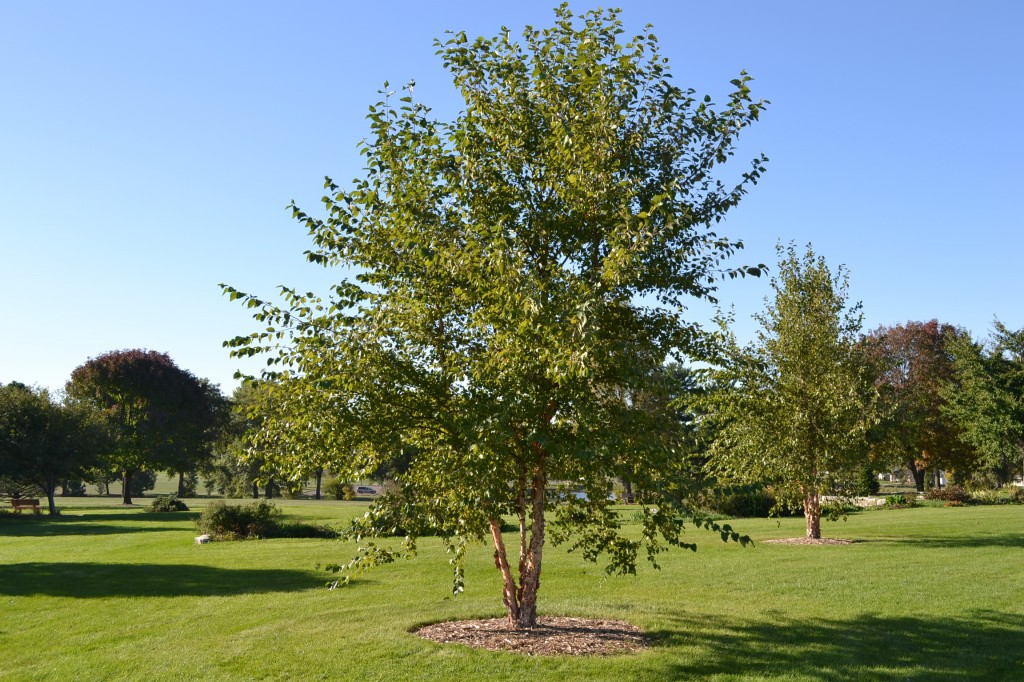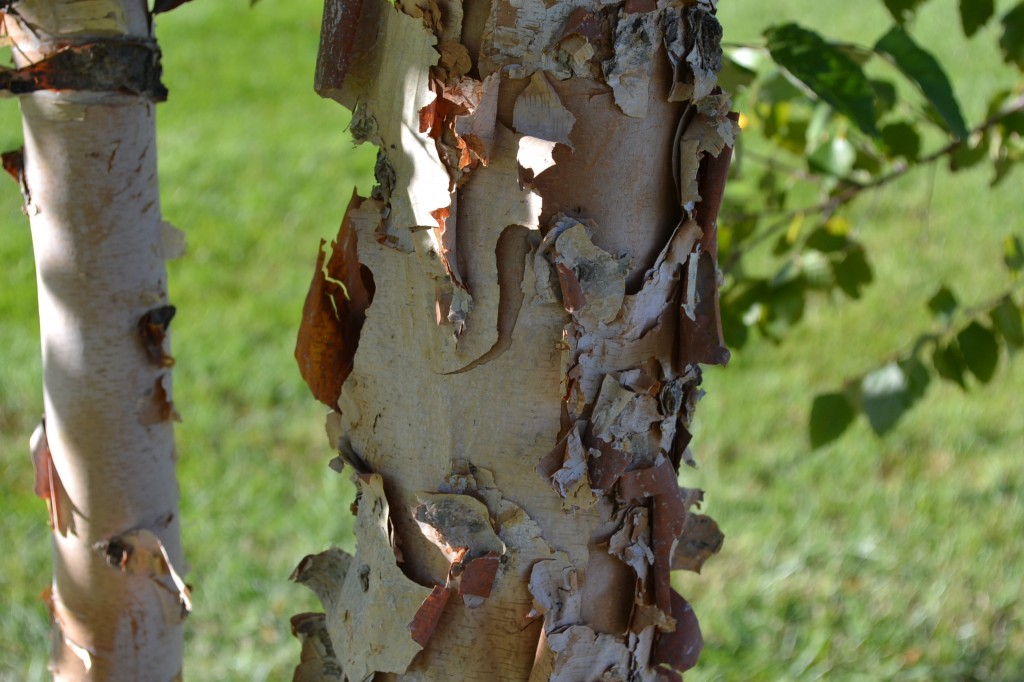River Birch trees are commonly planted and popular trees for zone 5 landscapes. These trees are usually grown in clumps of three trunks for added interest. This deciduous tree displays bright yellow foliage during the fall. This birch grows well in wet areas. This tree grows fast and can reach a height of 40 feet tall when it is fully mature. This tree requires frequent watering, especially during periods of drought. River Birch is a native tree of North America.
River Birch produces seed pods that are unique to the variety. The seed pods are long and narrow and look like a skinny caterpillar. The pods of the tree are brown. The seeds are stacked on top of one another so when you break them; they fall apart.
The unique beauty of the peeling bark adds character and interest to landscapes. The meat of the bark is tan. When the bark peels, the underside is brown, and the top side turns a dirty white color. There is no maintenance in removing the bark of the tree. Bark naturally sheds as the growth progresses.
Branching of the River Birch tree is moderately weak. You will notice small branches shedding when the tree matures. Storms can also cause the tree to lose limbs. Overall this is a neat tree to use in landscapes.
River Birch
Betula Nigra
Plant Details
Flower Color- Yellow
Foliage Color- Green in the summer and yellow in the fall.
Zone- 4-9
Height- 40 feet tall
Spread- 30 feet wide
Light- Full sun
Details- Best know for its peeling bark, this tree makes a great focal point in landscapes. The three trunk formation sets this tree apart from other trees. This birch is commonly planted in landscapes near collections of water. This deer resistant plant provides year round interest.
Other birch tree options.
- Cutleaf European White Birch
- Dura Heat® River Birch
- European White Birch
- Heritage® River Birch
- Purple Rain® European White Birch
- Summer Cascade River Birch
- Whitebarked Himalayan Birch
- Young’s Weeping Birch



